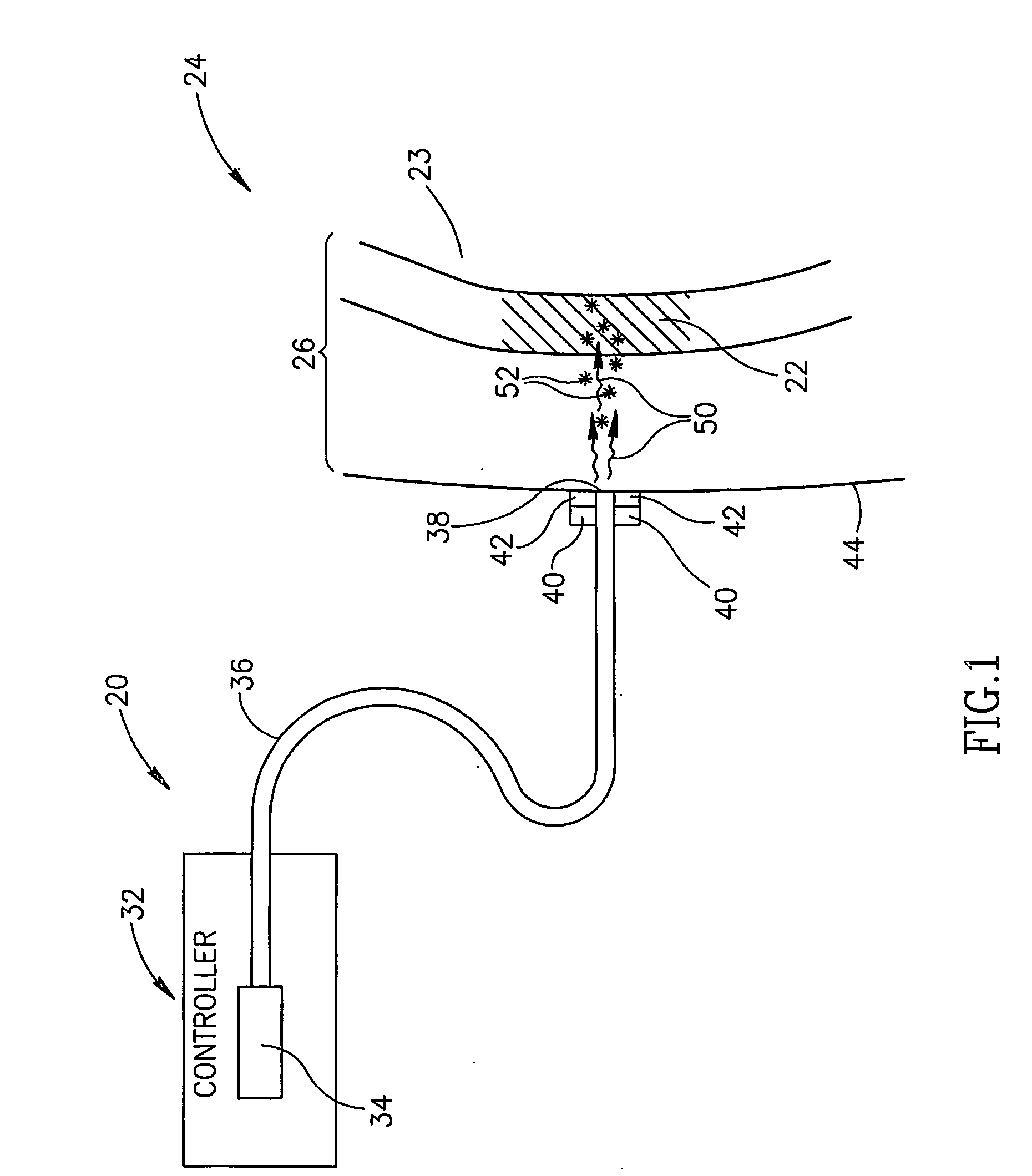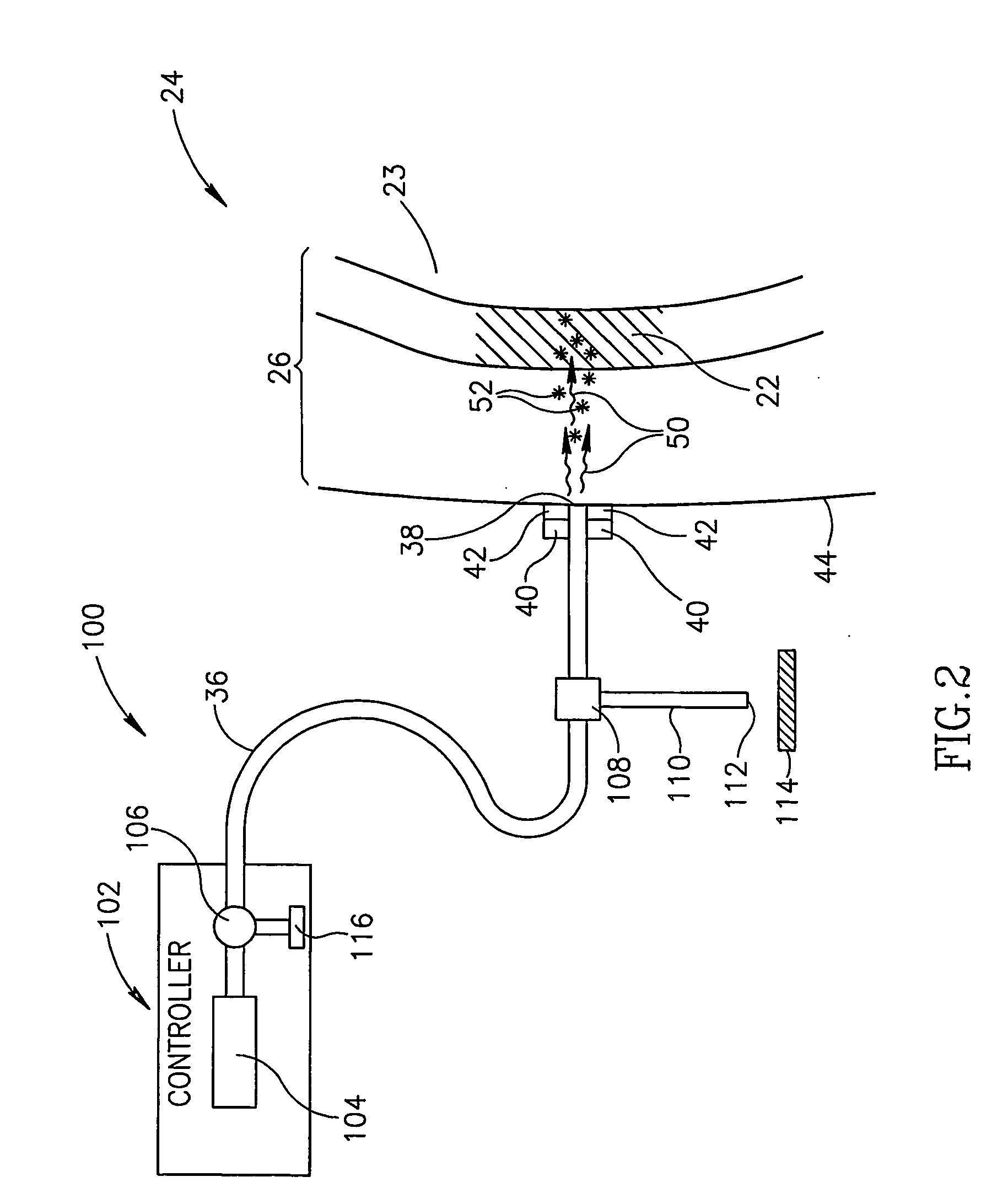Photoacoustic Assay Method and Apparatus
a technology of photoacoustic assay and apparatus, applied in the field of non-invasive invivo methods and apparatus, can solve the problems of poor spatial resolution of nirs methods and technologies, noise generation of nirs signals, and poor signal-to-noise ratio of nirs methods
- Summary
- Abstract
- Description
- Claims
- Application Information
AI Technical Summary
Benefits of technology
Problems solved by technology
Method used
Image
Examples
Embodiment Construction
[0049]FIG. 1 schematically shows an assay apparatus 20, hereinafter referred to as a “glucometer”, assaying glucose in a “target region”22 of a body part 24 of a patient, in accordance with an embodiment of the invention. Target region 22 is optionally located in a region 26 of soft tissue of body part 24 and comprises a body fluid, such as for example interstitial fluid, having a concentration of glucose. Optionally, target region 22 is a volume of body fluid having a concentration of glucose and region 26 is a region of a fluid cavity containing the body fluid. For example, as in FIG. 1, target region 22 is a bolus of blood and the fluid cavity a blood vessel 23.
[0050]Glucometer 20 optionally comprises a controller 32, a light source 34, optionally located in the controller, and an optic fiber 36 coupled to the light source. An end 38 of fiber 36 is optionally mounted to a support structure 40, hereinafter a “probe head”, to which an acoustic transducer or array of transducers is ...
PUM
 Login to View More
Login to View More Abstract
Description
Claims
Application Information
 Login to View More
Login to View More - R&D
- Intellectual Property
- Life Sciences
- Materials
- Tech Scout
- Unparalleled Data Quality
- Higher Quality Content
- 60% Fewer Hallucinations
Browse by: Latest US Patents, China's latest patents, Technical Efficacy Thesaurus, Application Domain, Technology Topic, Popular Technical Reports.
© 2025 PatSnap. All rights reserved.Legal|Privacy policy|Modern Slavery Act Transparency Statement|Sitemap|About US| Contact US: help@patsnap.com



